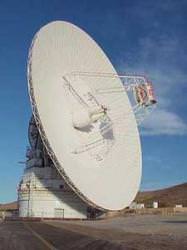NASA will use its Deep Space Network to transmit a song across the universe. And fittingly, the song is “Across the Universe” by the Beatles. On Feb. 4 at 7 pm EST, the song will be beamed towards the North Star, Polaris, located 431 light years away from Earth, and will travel across the universe at 186,000 miles per second.
Former Beatle Paul McCartney thinks this is a great idea. “Send my love to the aliens,” he said in a message to NASA.
If there are any beings near Polaris, they’ll hear the song in about 431 years.
The song’s transmission will commemorate the 40th anniversary of the day The Beatles recorded the song, as well as the 50th anniversary of both NASA’s founding and the beginning days of the Beatles. Two other anniversaries also are being honored: The launch 50 years ago this week of Explorer 1, the first U.S. satellite, and the founding 45 years ago of the Deep Space Network, an international network of antennas that supports missions to explore the universe.
Feb. 4 has been declared “Across The Universe Day” by Beatles fans to commemorate the anniversaries. As part of the celebration, the public around the world has been invited to participate in the event by simultaneously playing the song at the same time as the transmission by NASA.
John Lennon’s widow, Yoko Ono, characterized the song’s transmission as a significant event. “I see that this is the beginning of the new age in which we will communicate with billions of planets across the universe,” she said.
Even though radio and television signals on Earth ‘leak’ out into space all the time, hopefully NASA can use this event to generate enthusiasm and promote awareness of its history, as well as its plans for future missions.
Additionally, this is a chance for the public to learn more about the Deep Space Network, NASA’s incredibly reliable system of radio antennas that is critical in supporting lunar and planetary exploration. The DSN is used for tracking of spacecraft, sending telemetry and commands, and for deep space navigation. Learn more about the DSN here.
Original News Source: NASA Press Release

